Sony ZF9 vs Samsung Q9FN – What’s the difference?
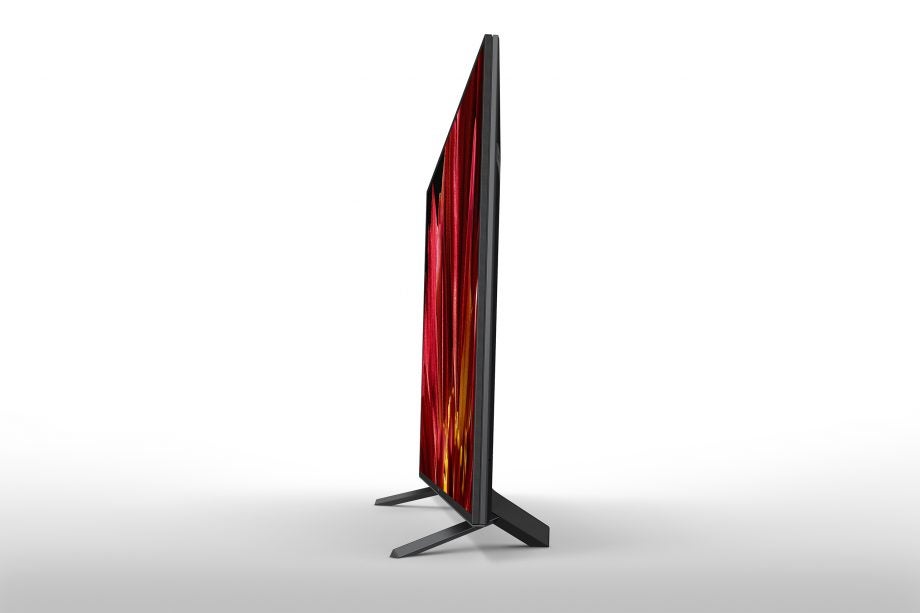
Samsung’s Q9FN series of LCD TVs is so darned good that we’ve been struggling to think of any other LCD TVs that might be able to give it serious competition this year. But Sony may just have provided us with an answer in the shape of its upcoming ZF9 series.
Sony ZF9 vs Samsung Q9FN: Recently unveiled in New York, the Sony ZF9 is the eagerly awaited successor to Sony’s much-loved ZD9. They use the same key technology of a direct backlighting system with hundreds of zones of local dimming. Aside from that – as we’ve already discussed in our separate Sony ZF9 vs ZD9 comparison – the Sony ZF9 is a very different animal, in ways that make it an even more intriguing rival for the Samsung Q9FN.
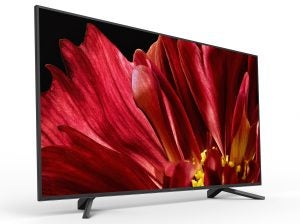
Sony ZF9
Sony ZF9 vs Samsung Q9FN – Design and dimming zones
In terms of design, both the Sony ZF9 and Samsung Q9FN look chunkier round the back than most modern TVs because of their need to accommodate direct (rather than edge) LED lighting systems. They both have trim screen frames – but Samsung’s Q9FN just wins on design thanks to its attractive, centrally mounted stand (in the UK format) versus the ZF9’s oversized and slightly comical feet.
Neither Sony or Samsung like to divulge stuff like the number of dimming zones they’re using, but we know it’s more than 400 in Samsung’s case, and should be around 600 in the ZF9’s case if it follows the old Sony ZD9. My impression from Sony’s launch event is that the Sony ZF9 may actually use fewer dimming zones than the ZD9 series. But we can only guess for the time being.
In any case, the sheer number of dimming zones a TV has is not a guarantee of picture quality. Also important here are the processing system and the algorithms that drive that local dimming system.
Related: Best TVs
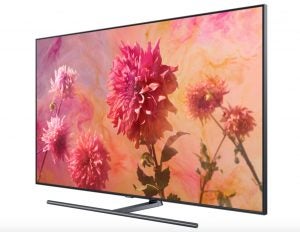
Samsung Q9FN
Sony ZF9 Vs Samsung Q9FN – Processing
Samsung has made big steps in this respect with its new Q Engine, which can gradually dim the light in each individual dimming zone as the light travels away from the zone’s brightest point.
The Sony ZF9 is the first TV to carry the X1 Ultimate processing chip. This is around twice as powerful as the old X1 Extreme processor in Sony’s ZD9 set. One of Sony’s top TV engineers confirmed at the ZF9 launch event that one job of the Ultimate processor is to drive a much-improved local dimming system.
The X1 Ultimate processor’s extra power should also make some traditional Sony strengths even better. Particularly the upscaling of HD sources to 4K, and upconversion of standard dynamic range pictures to HDR. Samsung’s own Q Engine is no slouch in these respects either, but from what we’ve seen so far, the Sony Z9F will likely break new ground when it comes to bringing legacy content up to the latest standards.
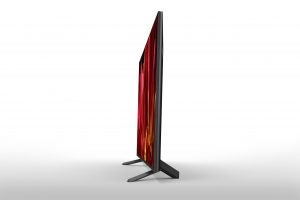
Sony ZF9
Sony ZF9 vs Samsung Q9FN – Brightness
Sony never discusses its TVs’ brightness specifications, so we don’t know yet if the Sony ZF9 will be as bright as the ZD9 (which measured around 1600 nits) or the Samsung Q9FN (2413 nits). From what we could see of the Sony ZF9, my suspicion is that it may be slightly less bright than its predecessor. And so much less bright than the Samsung Q9FN.
This is perhaps unsurprising, given that the Q9FN uses Samsung’s proprietary QLED technology, where colour is provided by Quantum Dots clad in metal so that they can be pushed harder for more HDR-friendly brightness and colour ‘volume’.
In the face of such aggression from Samsung and HDR’s hunger for light, Sony’s potential (I must stress that it isn’t yet confirmed) step back from the pursuit of brightness with the ZF9 may sound counter-intuitive. However, there’s enticing method to Sony’s apparent madness.
Namely that it has designed the ZF9 with a new mission in mind: delivering pictures that get as close as possible to the way their creators intended them to look like. And since many creators currently design their content on Sony’s BVM-X300 OLED professional monitor, the ZF9’s pictures appear to have been tuned to bring them closer to that.
This puts them squarely at odds with those of the Samsung Q9FN, which aggressively uses its brightness to make the most of the brightest end of HDR’s potential light spectrum.
Related: Best soundbars

Samsung Q9FN
Sony ZF9 vs Samsung Q9FN – Performance
First impressions of the ZF9’s performance suggest that it may also sacrifice a little black level response compared with the Q9FN in its quest to get close to the X300 monitor. Again, this might sound counter-intuitive, given that OLED screens are renowned for their inky black colours.
However, the ZF9’s approach let it reproduce impressive amounts of subtle detailing in the darkest parts of the ZF9 picture during the launch event demos, whereas Samsung’s focus on combining very bright peaks with very deep blacks can lead to subtle details in the darkest picture areas getting ‘crushed’ out of the picture.
Until we get a ZF9 in to test fully, it’s impossible to say which approach gives the best overall results. It could simply be a case of different strokes for different folks.
But there is one performance area where the ZF9 definitely outguns the Q9FN: viewing angles. A proprietary new panel design lets you watch the ZF9 from almost right angles without the usual contrast and colour reductions.
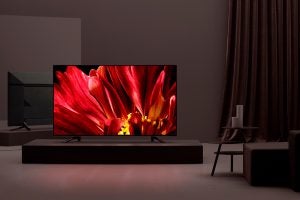
Sony ZF9
Also likely to give the ZF9 an edge is Sony’s X-Motion Clarity system. This uses the TV’s direct lighting and local dimming to improve how motion looks by manipulating the back light only in those areas of the picture where the motion is taking place. This avoids the image-wide brightness loss associated with the black frame insertion system usually needed to get such natural motion from LCD TVs.
Samsung’s Q9FN, however, has a clever trick of its own. Filters in its screen soak up ambient light and room reflections supremely well, making pictures easier to enjoy even in a bright room. The ZF9 screens certainly looked more reflective during the recent ‘reveal’ demonstrations.
The Q9FN would have been able to boast professional calibration tools over any previous Sony rival. But with the ZF9, Sony has introduced calibration support for the first time – including an app for running an auto-calibration process if you have the necessary measuring equipment.
Sony’s new ‘as the director intended’ focus has also seen it become the first TV brand to introduce a Netflix Calibrated Mode. This adjusts the TV’s picture settings when watching the Netflix app, to make it look like what the Netflix’s mastering team intended. No such mode is available on Samsung’s Q9FN.
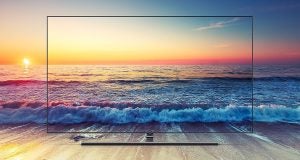
Samsung Q9FN
Sony ZF9 vs Samsung Q9FN – HDR formats
The Samsung and Sony sets differ, too, on the HDR formats they support. Both handle the industry-standard HDR10 and broadcast-friendly HLG systems. But while the ZF9 supports the Dolby Vision ‘premium’ HDR format with its extra layer of scene-by-scene data, the Q9FNs support HDR10+. This is a new rival to Dolby Vision, developed predominantly by Samsung.
There isn’t enough HDR10+ content out there yet to form a conclusion as to which format delivers the best results. And the fact that there are already dozens of Dolby Vision streams and 4K Blu-rays available to watch at home means Sony’s HDR horse is off to a flyer. But the first HDR10+ 4K Blu-rays from 20th Century Fox are incoming soon, and all of Amazon’s HDR TV shows are already streaming in HDR10+.
The final comparison to make between the ZF9 and Q9FN is their smart systems. During its demonstration of the upcoming ZF9, Sony gave us a tantalising glimpse of the new Android Oreo system. This looked far superior to past Android TV interfaces: less cluttered, more intuitive and with a greater understanding of the stuff TV owners want their smart systems to be focused on.
The Samsung Q9FN uses Samsung’s own Eden smart platform. And a very good system this is too: well organised, slick, easy to customise and rich in content. I suspect it may still have the edge over the Oreo version of Android – but at least I look forward to trying out Oreo much more than I did spending time with any previous Android TV system.
We’ll be bringing you a review of a Sony ZF9 as soon as the TV launches in autumn 2018. For now, here’s our Samsung Q9FN review.

